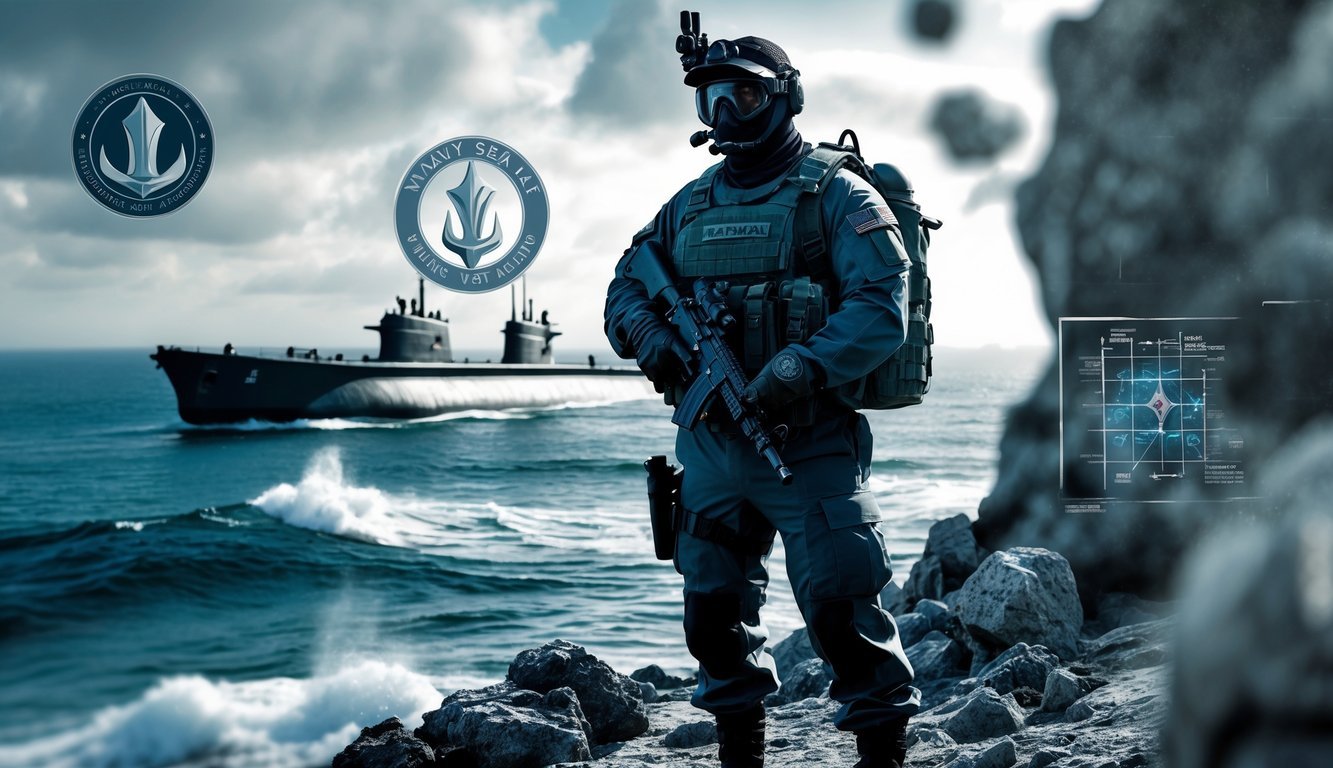PsychNewsDaily Publishers
100 Summit Drive
Burlington, MA, 01803
Telephone: (320) 349-2484
PsychNewsDaily Publishers
100 Summit Drive
Burlington, MA, 01803
Telephone: (320) 349-2484
Navy SEAL service can be verified through official records, trusted verifiers, and documents like the DD-214. Watch for signs of stolen valor and false claims.

If you’re curious about whether someone actually served as a Navy SEAL, don’t just take their word for it. You’ll get the most reliable answer by checking official records or reaching out to trusted SEAL verifiers who have access to the real lists. A lot of people make false claims, so proof really does matter.
Some folks might mention things like SEAL coins or toss out a team name, but honestly, those things don’t mean much on their own. Every real SEAL gets recorded, and you can reach out to official sources or insiders to check.
That way, you won’t fall for a made-up story.
Learning how to check if someone was a SEAL helps you appreciate what the title actually stands for. It’s not just talk—it’s about real, verified service and respect that’s earned.
Here’s how you can find out if someone’s story holds up.

To really know if someone served as a Navy SEAL, you need to look at official records, check public databases, and maybe lean on people in the SEAL community. Those steps help you avoid getting fooled by fake stories.
The best way to confirm Navy SEAL status is by checking military records. The Department of Defense keeps files on everyone who completes BUD/S and serves in Naval Special Warfare.
You can request these records through the National Personnel Records Center or the National Archives. It’s not always quick, but it works.
Organizations like the Naval Special Warfare Command can verify service, but they usually only respond to official requests or family members. And just to clear it up—there are no secret SEALs hiding from the records. If someone served, there’s proof somewhere.
You can search public military records using tools like the National Archives or other military databases. These might show if someone was in the Navy or went through SEAL training.
Some third-party services also verify SEAL status for a fee. They check training lists and operational records, but you really need to use reputable sources—fake databases are out there.
Keep an eye out for signs of stolen valor. If someone won’t show proof like a SEAL challenge coin or can’t give details about their team or missions, be skeptical.
The Stolen Valor Act of 2013 makes it a federal crime to lie about military awards. Ask direct questions about their service, unit, or rank.
Real SEALs usually don’t brag or make wild claims about their missions, so watch for that too.
Don Shipley, a former Navy SEAL, spends his time exposing fake SEAL claims. He runs a SEAL verification service and has checked over 40,000 claims by digging into official lists.
Shipley also calls out imposters publicly to defend the SEAL reputation. His service is one of the most trusted ways to confirm SEAL status since he has unique access to records and plenty of experience.

To figure out if someone truly served as a Navy SEAL, you need to know what their training involved and what counts as real service. It helps to clear up common myths, too.
Every SEAL starts with BUD/S, which stands for Basic Underwater Demolition/SEAL training. It’s a tough course at the Naval Special Warfare Center that covers physical fitness, navigation, swimming, and tactics.
After BUD/S, they go through SEAL Qualification Training (SQT). This step preps them for real missions and focuses on survival and special ops skills.
Graduating from both BUD/S and SQT is what truly makes someone a SEAL.
If a person can’t name their BUD/S class number or graduation date, that’s a red flag.
You’ll meet SEALs who are still in the Navy and others who finished their service. Active duty SEALs are still out there on missions, while former SEALs have left the military and usually have a DD-214 form as proof of their honorable service.
You can confirm SEAL service by asking for their DD-214 or VA medical card if they’re out of the Navy. These documents show their job and rank.
Navy SEALs earn specific awards tied to their training and missions. You’ll see things like the Navy and Marine Corps Commendation Medal and the SEAL Trident badge.
The SEAL Trident means they finished training and served on a SEAL team. People involved in high-profile missions, like the raid on Osama bin Laden, have these badges and medals.
If someone says they’re a SEAL but has no awards or identification, that’s suspicious.
There are plenty of myths out there about Navy SEALs. Not every special operations soldier is a SEAL—Army units are completely different.
Saying you were on an “underwater demolition team” doesn’t mean you’re a SEAL. Those teams existed before SEALs and are just part of the history.
Some people try to fake SEAL status with copied badges or made-up stories. The best way to avoid confusion is to ask for details like their BUD/S class number, official paperwork, or proof of honorable discharge.

You’ve got a few ways to check if someone was really a Navy SEAL. Asking for details or using official records makes it easier to spot someone who’s pretending.
Start by asking for their BUD/S class number and graduation date. Those details are tough to fake.
You can also go through someone with insider knowledge or access to official records, like a SEAL verifier.
There’s no public, official Navy SEAL database. Some private verifiers do have access to lists of people who finished training.
Imposters usually can’t give the right class numbers or dates. They might tell wild stories or show off medals they never earned.
If someone won’t share basic info about their service, that’s a pretty big warning sign.
BUD/S class rosters and team lists from the 1960s are in the National Archives. More recent records aren’t usually public.
You’ll need to request records officially or use trusted sources.
Some private sites and verifiers keep records and will confirm claims for a fee. These sources check the info carefully.
Going through them can help you avoid falling for false claims.
People who aren’t telling the truth usually can’t share clear details about their training or which unit they served with.
You might notice their stories shift around or suddenly include wild, impossible missions.
Some folks show off military awards or slap SEAL symbols on their license plates, but they can’t back it up with proof. That’s a definite red flag.